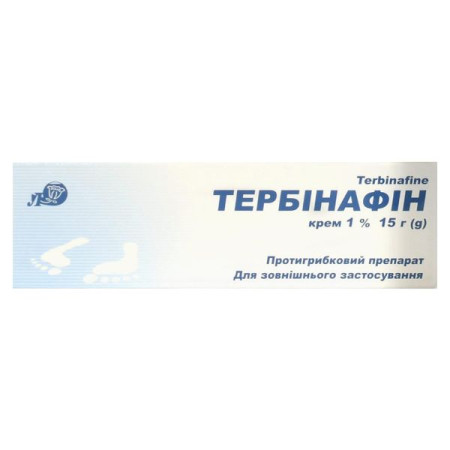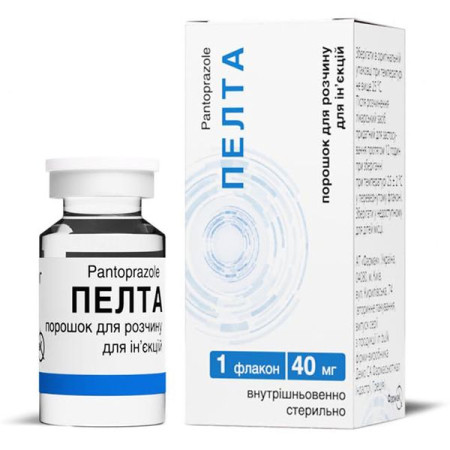Motoprid tablets 50 mg No. 40

Instructions for use Motoprid tablets 50 mg No. 40
Composition
active ingredient: itopride hydrochloride;
1 tablet contains 50 mg of itopride hydrochloride;
excipients: lactose monohydrate; corn starch; carmellose calcium (calcium carboxymethylcellulose); colloidal anhydrous silicon dioxide; magnesium stearate;
shell: Opadray II White film-coating mixture: lactose monohydrate; hypromellose (hydroxypropylmethylcellulose); polyethylene glycol; titanium dioxide (E 171); triacetin.
Dosage form
Film-coated tablets.
Main physicochemical properties: tablets, round in shape with a biconvex surface, coated with a white film coating.
Pharmacotherapeutic group
Peristaltic stimulants. ATX code A03F A07.
Pharmacological properties
Pharmacodynamics.
Itopride hydrochloride activates propulsive motility of the gastrointestinal tract due to antagonism with dopamine D2 receptors and inhibitory activity of acetylcholinesterase. Itopride hydrochloride activates the release of acetylcholine and inhibits its breakdown. Itopride hydrochloride also has an antiemetic effect due to interaction with D2 receptors localized in the chemoreceptor trigger zone, which was demonstrated by dose-dependent inhibition of apomorphine-induced vomiting in animals. The action of Itopride hydrochloride is highly specific for the upper gastrointestinal tract.
Itopride hydrochloride does not affect serum gastrin levels.
Pharmacokinetics.
Absorption. Itopride hydrochloride is rapidly and almost completely absorbed from the gastrointestinal tract. Its relative bioavailability is 60%, which is associated with the effect of "first pass" through the liver. Food does not affect bioavailability. After taking 50 mg of itopride hydrochloride, Cmax is reached after 0.5-0.75 hours and is 0.28 μg/ml. With further use of the drug in doses from 50 to 200 mg 3 times a day for 7 days, the pharmacokinetics of itopride hydrochloride and its metabolites were linear with minimal cumulation.
Distribution: Approximately 96% of itopride hydrochloride is bound to plasma proteins (mainly albumin). Binding to α1-acid glycoprotein is less than 15%.
Metabolism. Itopride hydrochloride is actively biotransformed in the liver. 3 metabolites have been identified, only one of which exhibits insignificant activity that is of no pharmacological significance (approximately 2-3% of itopride hydrochloride). The primary metabolite is the N-oxide, which is formed as a result of oxidation of the quaternary amino-N-dimethyl group.
Itopride hydrochloride is metabolized by flavin-dependent monooxygenase (FMO3). The number and efficiency of FMO isoenzymes in humans may vary depending on genetic polymorphisms, which sometimes lead to the development of an autosomal recessive condition known as trimethylaminuria (fish odor syndrome). In patients with trimethylaminuria, T1/2 is increased.
According to in vivo pharmacokinetic studies, itopride hydrochloride does not inhibit or induce CYP2C19 and CYP2E1. The use of itopride hydrochloride does not affect the content of CYP or the activity of uridine diphosphate glucuronidyl transferase.
Excretion. Itopride hydrochloride and its metabolites are excreted mainly in the urine. Renal excretion of itopride hydrochloride and its N-oxide was 3.7% and 75.4%, respectively, after a single oral administration of the drug to healthy volunteers at a therapeutic dose.
The terminal half-life (T1/2) of itopride hydrochloride was approximately 6 hours.
Indication
Relief of gastrointestinal symptoms of functional non-ulcer dyspepsia (chronic gastritis), namely:
bloating;
feeling of rapid satiety;
pain and discomfort in the upper abdomen;
anorexia;
heartburn;
nausea;
vomiting.
Contraindication
Hypersensitivity to itopride hydrochloride and other components of the drug.
Conditions in which increased contractile activity of the gastrointestinal tract may be harmful, such as gastrointestinal bleeding, mechanical obstruction or perforation.
Interaction with other medicinal products and other types of interactions
Metabolic interactions are not expected since itopride hydrochloride is primarily metabolized by flavin monooxygenase and not by cytochrome P450 isoenzymes. No changes in protein binding were observed when it was co-administered with warfarin, diazepam, diclofenac sodium, ticlopidine hydrochloride, nifedipine and nicardipine hydrochloride. Since itopride hydrochloride has a gastrokinetic effect, it may affect the absorption of other drugs administered orally at the same time.
Medicines with a narrow therapeutic index, sustained release or enteric-coated should be used with extreme caution.
Antiulcer drugs such as cimetidine, ranitidine, teprenone and cetraxate do not affect the prokinetic effect of itopride hydrochloride.
Anticholinergic drugs may reduce the effect of itopride hydrochloride.
Application features
Itopride hydrochloride enhances the action of acetylcholine and may cause cholinergic side effects. There are no data on long-term use.
In general, itopride hydrochloride should be administered to elderly patients with appropriate caution and further observation, taking into account the increased frequency of impaired renal function, liver function, concomitant diseases or concomitant therapy with other drugs in such patients.
The medicine contains lactose, therefore patients with rare hereditary diseases such as galactose intolerance, Lapp lactase deficiency or glucose-galactose malabsorption should not take this medicine.
Use during pregnancy or breastfeeding
Fertility: There are no data on the effect of itopride on human fertility; animal studies are known to have shown no harmful effects of itopride.
Pregnancy. There are no or limited amount of data from the use of itopride in pregnant women (less than 300 pregnancy outcomes). Animal studies do not indicate direct or indirect harmful effects with respect to reproductive toxicity. As a precautionary measure, it is preferable to avoid the use of itopride during pregnancy.
Breastfeeding. Itopride is excreted in breast milk in animals, but there are insufficient data on the excretion of itopride in human breast milk. A risk to the breastfed child cannot be excluded. A decision must be made whether to discontinue breast-feeding or to discontinue/abstain from itopride therapy taking into account the benefit of breast-feeding for the child and the benefit of therapy for the woman.
Ability to influence reaction speed when driving vehicles or other mechanisms
There is no information on the possible effect on reaction speed, but when deciding whether to drive or operate other mechanisms, the possibility of dizziness should be taken into account.
Method of administration and doses
For adults, the recommended dose is 150 mg per day (1 tablet (50 mg) 3 times a day before meals). This dose may be reduced depending on the patient's age and symptoms (see section "Special instructions").
It is known that during clinical trials the duration of use of itopride hydrochloride was up to 8 weeks.
Children.
The safety of itopride hydrochloride in children under 16 years of age has not been established.
Overdose
Treatment: In case of excessive overdose, the usual measures of gastric lavage and symptomatic treatment should be taken.
Adverse reactions
According to literature data, the following adverse reactions were observed with the indicated frequency in 998 patients treated with itopride in 4 clinical placebo-controlled studies, 4 clinical comparative studies and 13 uncontrolled interventional clinical studies with a standard daily dose of itopride of 150 mg or less. Adverse reactions are classified by system organ class (according to MedDRA) and by frequency of occurrence: common (from > 1/100 to <1/10) and uncommon (from > 1/1000 to <1/100). No adverse reactions were identified in the categories "very common" (> 1/10), "rare" (from > 1/10,000 to <1/1000) and "very rare" (<1/10,000). From the digestive system: common - abdominal pain, diarrhea; uncommon – increased salivation.
From the nervous system: infrequently - dizziness, headache.
Skin and subcutaneous tissue disorders: uncommon – rash.
Laboratory tests: uncommon – increased aminotransferase levels, decreased white blood cell count.
Adverse reactions from spontaneous reports reported during post-marketing use. It is not possible to accurately estimate the frequency of occurrence from the available data.
From the blood and lymphatic system: leukopenia, thrombocytopenia.
Immune system disorders: hypersensitivity, including anaphylactoid reaction.
On the part of the endocrine system: increased prolactin levels in the blood.
From the nervous system: dizziness, headache, tremor.
On the part of the digestive system: abdominal pain, diarrhea, constipation; increased salivation, nausea.
Liver and biliary tract disorders: jaundice.
Skin and subcutaneous tissue disorders: rash, erythema and itching.
Reproductive system and breast disorders: gynecomastia.
Laboratory tests: increased levels of AST, ALT, GGT, alkaline phosphatase, bilirubin in the blood.
Reporting of adverse reactions.
Reporting adverse reactions after the registration of a medicinal product is important. This allows monitoring of the benefit/risk ratio when using this medicinal product. Medical and pharmaceutical professionals, as well as patients or their legal representatives, should report all cases of suspected adverse reactions and lack of efficacy of the medicinal product via the Automated Information System for Pharmacovigilance at the link: https://aisf.dec.gov.ua.
Expiration date
3 years.
Storage conditions
Store in the original packaging at a temperature not exceeding 25 °C.
Keep out of reach of children.
Packaging
10 tablets in a blister; 1 blister in a pack.
10 tablets in a blister; 2 blisters in a pack.
10 tablets in a blister; 4 blisters in a pack.
Side effects
Immune system disorders: hypersensitivity, including anaphylactoid reaction;
from the endocrine system: increased prolactin levels in the blood;
from the blood and lymphatic system: leukopenia, thrombocytopenia;
Gastrointestinal: abdominal pain, diarrhea, constipation; increased salivation, nausea;
from the nervous system: dizziness, headache, tremor;
Skin and subcutaneous tissue disorders: rash, erythema and itching;
Liver and biliary tract: jaundice;
Reproductive system and breast disorders: gynecomastia.
Laboratory tests: increased levels of AST (aspartate aminotransferase), ALT (alanine aminotransferase), GGT (gamma-glutamyltransferase), alkaline phosphatase, bilirubin in the blood, increased aminotransferase levels, decreased white blood cell count.
Vacation category
According to the recipe.
Producer
JSC "KYIV VITAMIN FACTORY".
Location of the manufacturer and address of its place of business.
04073, Ukraine, Kyiv, Kopylivska St., 38.
Website: www.vitamin.com.ua.
Address
04073, Ukraine, Kyiv, Kopylivska St., 38.
Website: www.vitamin.com.ua.
There are no reviews for this product.
There are no reviews for this product, be the first to leave your review.
No questions about this product, be the first and ask your question.










